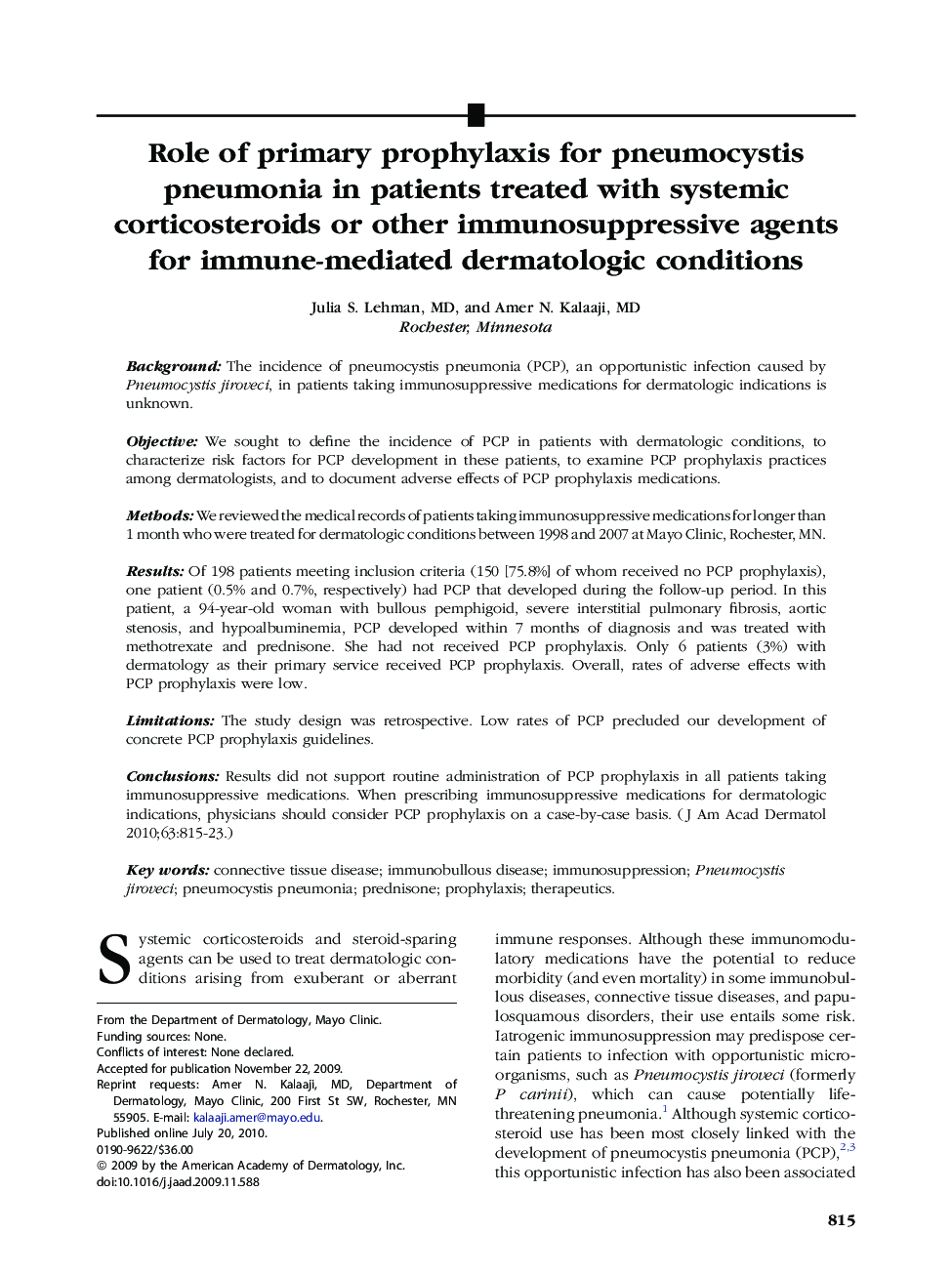| Article ID | Journal | Published Year | Pages | File Type |
|---|---|---|---|---|
| 3208850 | Journal of the American Academy of Dermatology | 2010 | 9 Pages |
BackgroundThe incidence of pneumocystis pneumonia (PCP), an opportunistic infection caused by Pneumocystis jiroveci, in patients taking immunosuppressive medications for dermatologic indications is unknown.ObjectiveWe sought to define the incidence of PCP in patients with dermatologic conditions, to characterize risk factors for PCP development in these patients, to examine PCP prophylaxis practices among dermatologists, and to document adverse effects of PCP prophylaxis medications.MethodsWe reviewed the medical records of patients taking immunosuppressive medications for longer than 1 month who were treated for dermatologic conditions between 1998 and 2007 at Mayo Clinic, Rochester, MN.ResultsOf 198 patients meeting inclusion criteria (150 [75.8%] of whom received no PCP prophylaxis), one patient (0.5% and 0.7%, respectively) had PCP that developed during the follow-up period. In this patient, a 94-year-old woman with bullous pemphigoid, severe interstitial pulmonary fibrosis, aortic stenosis, and hypoalbuminemia, PCP developed within 7 months of diagnosis and was treated with methotrexate and prednisone. She had not received PCP prophylaxis. Only 6 patients (3%) with dermatology as their primary service received PCP prophylaxis. Overall, rates of adverse effects with PCP prophylaxis were low.LimitationsThe study design was retrospective. Low rates of PCP precluded our development of concrete PCP prophylaxis guidelines.ConclusionsResults did not support routine administration of PCP prophylaxis in all patients taking immunosuppressive medications. When prescribing immunosuppressive medications for dermatologic indications, physicians should consider PCP prophylaxis on a case-by-case basis.
